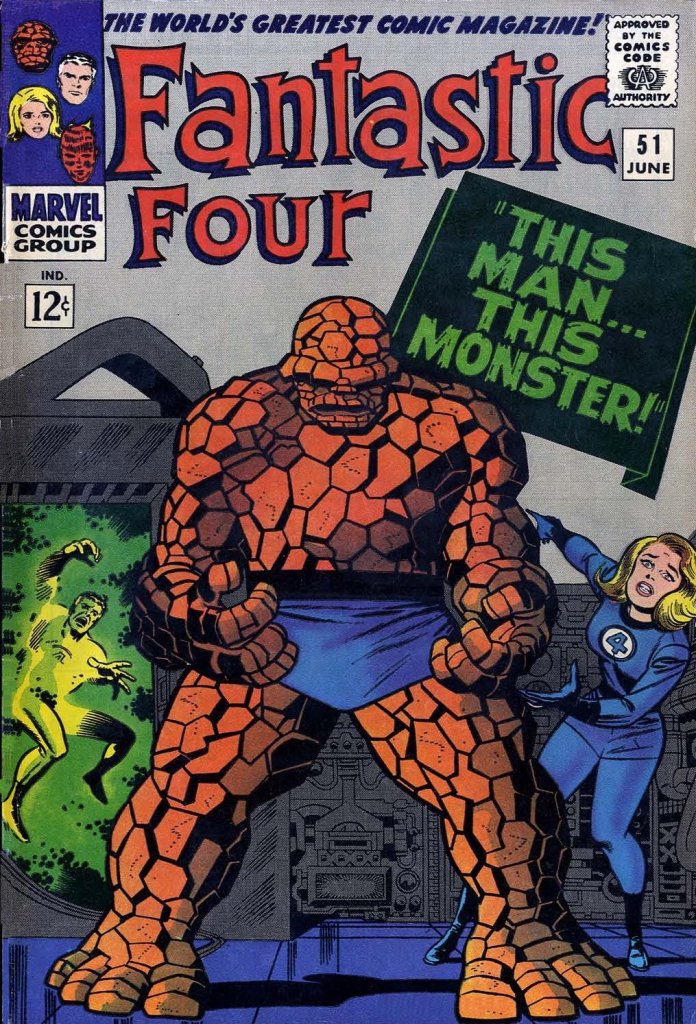
As I mentioned earlier, my first trip to an actual comic book store, a Heroes World outlet in Levittown, was a huge game-changing event for me. On the way there, I had intended to purchase the earliest issue of FANTASTIC FOUR that they had. This plan was foiled when the oldest FF issue they had was #1, for which they were asking $75.00–too rich for my ten-year-old blood. So I reoriented to Plan B, which was to purchase the oldest issue that I could afford. That turned out to be this book, FANTASTIC FOUR #51, the oldest back issue they had in the regular bins and not on the wall. I paid a princely $3.75 for it.

As anybody familiar with this period knows, FANTASTIC FOUR #51 is considered something of a high water mark in the run of the series. Released right after the conclusion of the Galactus trilogy, it tells a simple but effective done-in-one morality tale centering around the Thing and Reed Richards. By this point, long-time FANTASTIC FOUR inker Joe Sinnott was operating very much in synch with Jack Kirby and, combined with Kirby getting a small raise that allowed him the luxury to spend a bit more time on each page and bring in the same amount of money, this meant that the art was reaching a pinnacle of polish as well.
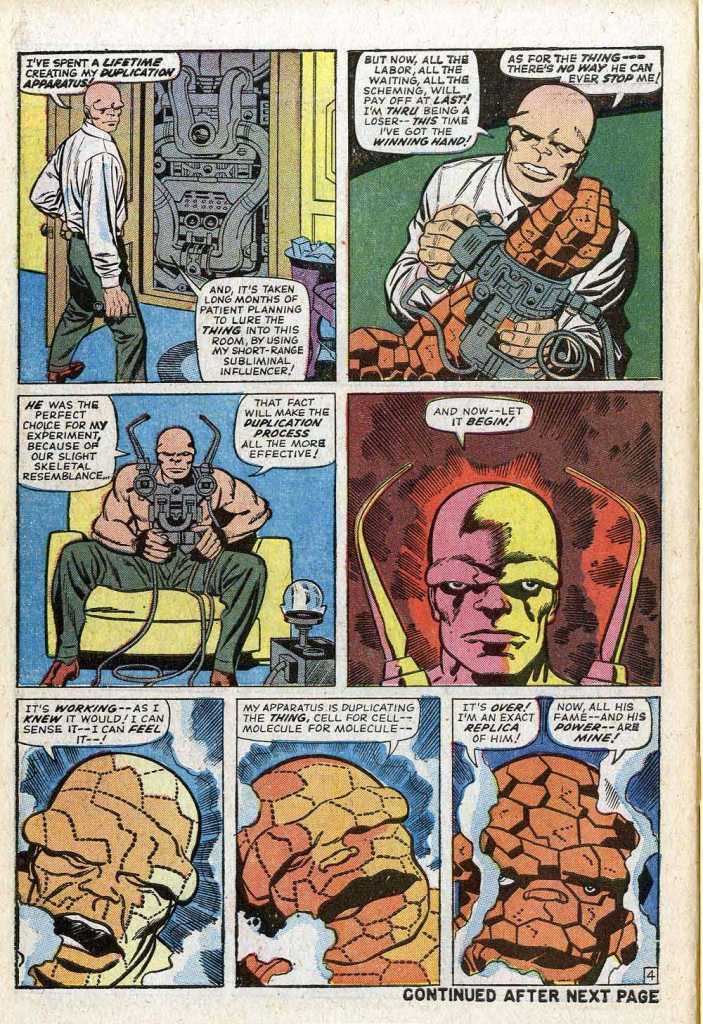
This was the first comic book from the prime, formative Marvel period that I owned, and so everything about it was of interest to me. The paper stock was heavier than what I was used to, but also somewhat coarse, and the cover stock was different and prone to chipping. And the Marvel voice developed by Stan Lee was in full evidence throughout this issue, not just in the story but also in the assorted ads and text pages–this was the pure, uncut stuff, the flavor that the creators of 1977 were trying to mimic in their own ads and Bullpen pages.
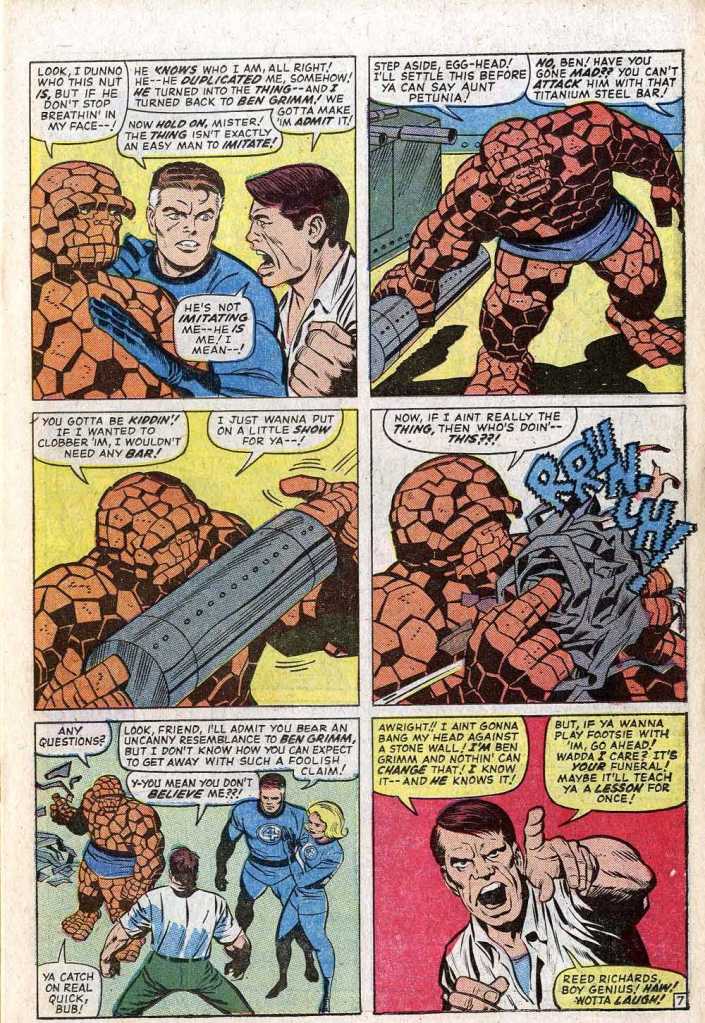
This was still the period when the original art size was twice up–the reduction to one-and-a-half times wouldn’t come for another year and change. As a result, the pages have a breezy openness to them. There’s more room for negative space in these panels. Additionally, there’s also room for a lot more copy, and Lee takes advantage of it in several spots, packing in character asides and bits of business with abandon. You really got your money’s worth out of a Marvel comic book released in 1966 in this respect

The story is pretty direct and simple. The Thing is depressed because his blind girlfriend Alicia Masters showed an interest in the alien Silver Surfer. Wandering through the rainy city, he comes across a nameless scientist (who is referred to as the Changeling in the Marvel Checklist) who gives him shelter and comfort. But he drugs Ben, and then uses a device to steal the Thing’s power and form for himself. He’s jealous of the fame and success of Mister Fantastic, and intends to use the Thing’s physique to both get into Fantastic Four headquarters and to get himself some revenge.
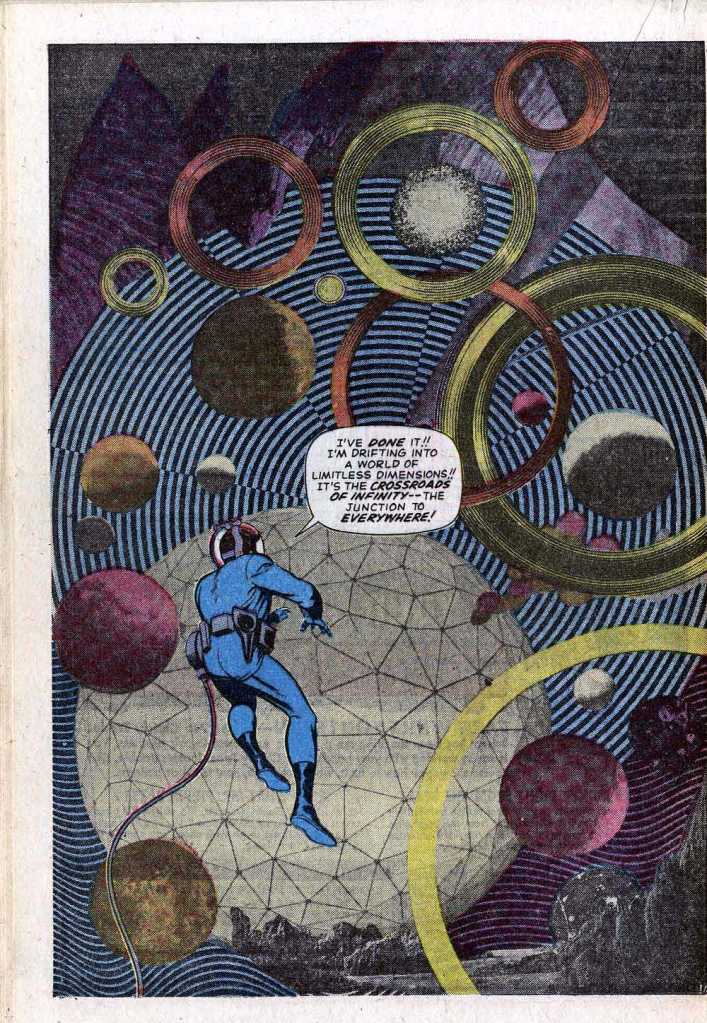
The Changeling makes his way to the Baxter Building, where Reed has been working tirelessly on a defense against alien entities who can travel faster than light, such as Galactus and the Silver Surfer. He’s built a Radical Cube, which will allow him to enter and explore Sub-Space–what will eventually become known as the Negative Zone. (The first Negative Zone was the barrier Maximus erected around the Inhumans’ city, sealing it off from the world, but at a certain point down the line Lee or Kirby or both got confused and started using the name of the latter for the former.) The Changeling is taken aback by the fact that Reed is preparing to risk his life selflessly with no fanfare or personal gain in evidence.
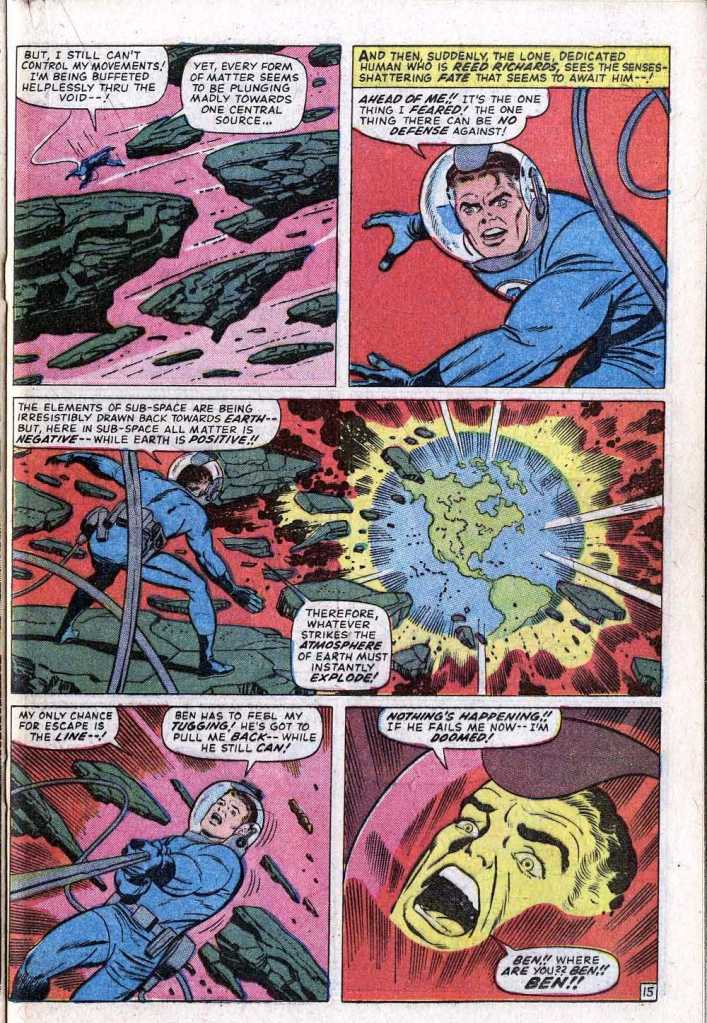
There’s also a subplot with Johnny Storm off at college that turns out to be a boondoggle that goes nowhere–in the very next issue, Johnny and his new pal Wyatt Wingfoot will be picked up by the FF for a new adventure and the Torch will never return to college. Anyway, Reed plunges into sub-space with the faux-Thing holding onto the tether which is his only lifeline back to the positive matter universe. After Kirby unleashed some mind-boggling visuals (including one of his collage pages, which in this instance didn’t reproduce too badly) , Reed discovers that all of the matter in Sub-Space is being drawn back to Earth–but since it’s all negative matter, it explodes on contact with the Earth’s atmosphere. Reed has only minutes until he’s destroyed and he signals for the Thing to pull him back. But there is no response.
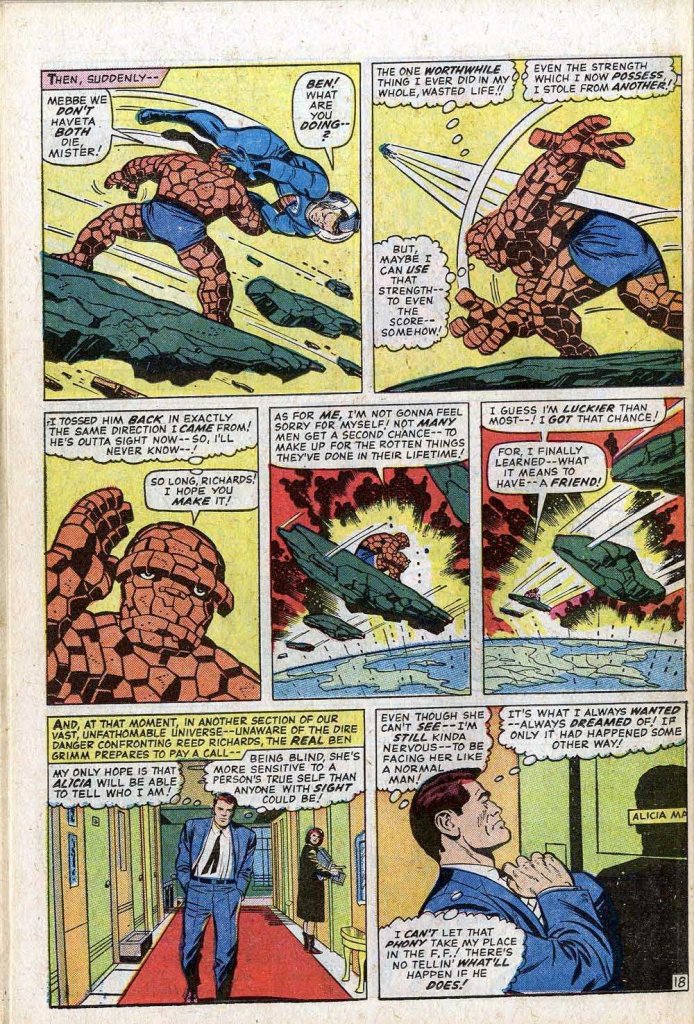
Back in the Baxter Building, the Changeling is having his own crisis of conscience. He hated Reed from afar, but now he’s seen up close how selfless and heroic Mister Fantastic really is. He finds that he can’t carry out his plan–and when the tether line securing Reed snaps, he heedlessly leaps into the Sub-Space breach, and is drawn to Reed’s location. Reed is horrified–he’s upset that his best friend Ben will be killed, having no clue about eh substitution. This is the final straw for the Changeling, and he picks Reed up and hurls him back teh way they came, hoping tat he might be able to get him through the Sub-Space portal and back home. And then, he quietly sits down to face his fast-approaching fate.

Meanwhile, the now-human Ben Grimm is approaching Alicia’s doorstep when he suddenly is transformed back into the Thing again–the inference is that the Changeling has met his maker, releasing his hold on Ben’s proper form. He races back to the Baxter Building to find Reed and Sue broken-hearted about his apparent demise. And the story wraps up with Reed observing that it was as though the Changeling got some small part of Ben’s own heroism along with his powerful body, and this compelled him to redeem himself, whatever his nefarious plans had been. The next issue box promotes the upcoming debut of the Black Panther, and it’s clear that this was lettered (or re-lettered) by a hand other than Art Simek’s. That first Panther story was rife with production hand-wringing and changes, so it’s likely that this extended to this next issue blurb as well.

Seems clear in hindsight that after the climax of Galactus, we are being treated to individual stories that highlight each of the FF one at a time. #51+- Reed. #54– Johnny. #55– Been. #56– Sue.
LikeLike
Question: I have a wall picture (19.25 x 13 inches) of FF #51 (June) and trying to figure out a selling price for it. Anyone know where I could find out something like that?
LikeLike